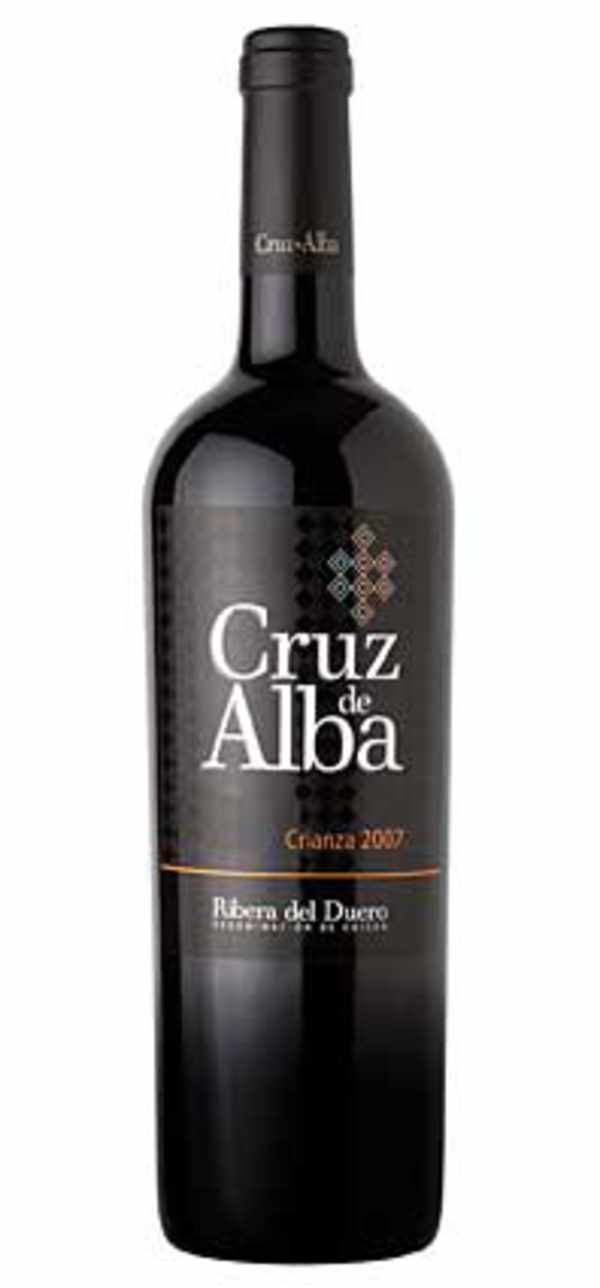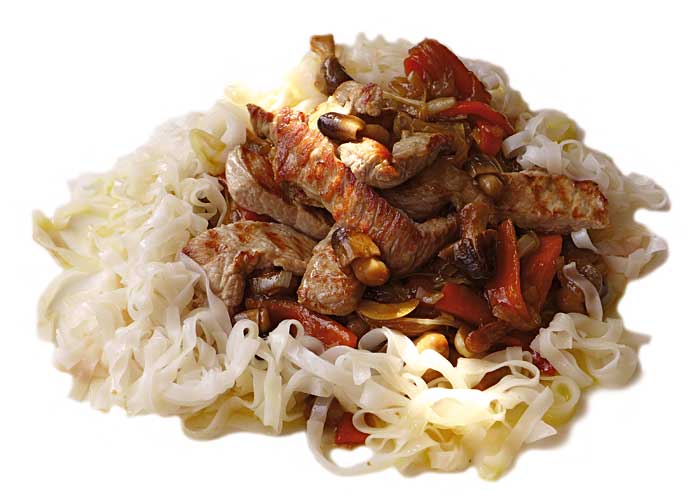Cruz de Alba with Beef in oyster sauce

Cruz de Alba
Winery Cruz de Alba
www.cruzdealba.es
D.O.: Ribera de Duero
Grapes: 100% Tempranillo
Ageing: 15 months in French oak barrels, 10 months in bottle cellar.
Price: 15 €
Excerpt from the book “Pairings of spanish wines with exotic cuisines”.
Click to see the preparation of these dishes, in Asian recipes.
Saying Quintanilla de Onésimo is like saying “the navel of Ribera de Duero”, that is why the winery Ramón Bilbao has been buying vineyards and building cellars in this village, although they already started making wine with grapes bought from local vine-growers, using hired cellars, in 2005.
In 2013, it received the award for the best tempranillo in the world. You only have to try it to verify that every effort has been made to achieve a great wine, one of those that dignify their Denomination of Origin.
It is a moreish wine, with a dense taste and a clean nose in which the aromas of wood, coffee, tobacco, cocoa, liquorice and vanilla stand out. These aromas are confirmed in mouth, though predominating ripe black fruits, the orthodox profile of this grape, which should be called “tinto fino” or “tinta del país” here.
Veal in oyster sauce
Despite the apparently eccentric combination, this dish has a taste that is very close to our cooking, since it consists of sautéed vegetables with some slightly cooked meat.
The oyster sauce that is sold by the bottle has nothing to do with the original one, invented by Lee Kam Sheung in the Cantonese town of Zhuhai, but it has already become a flavour that we associate with Chinese cuisine because Chinese restaurants use it for nearly everything.
It is easy to cook, tasty and even healthy, so take out your woks and impress your friends –let them pay for the wine. It is one of the few Chinese dishes that go well with a great wine like this ribera.
Pairing
This pairing must be one of the easiest ones in this book, since there are no stridencies, contrasts or potential conflicts.
My biggest concern was the sauce, since it is oyster only in the name, but it turned out to act as a flavour enhancer, in fact many cooks consider it as the best example of umami, that fifth taste discovered by professor Kikunae Ikeda in 1908.
The most interesting thing about this pairing is how both products enrich each other; logically, this Chinese dish becomes a gala dinner with a great ribera, but the wine in turn gains intensity and body, enhancing those truffle, liquorice and toffee notes and becoming more generous.












